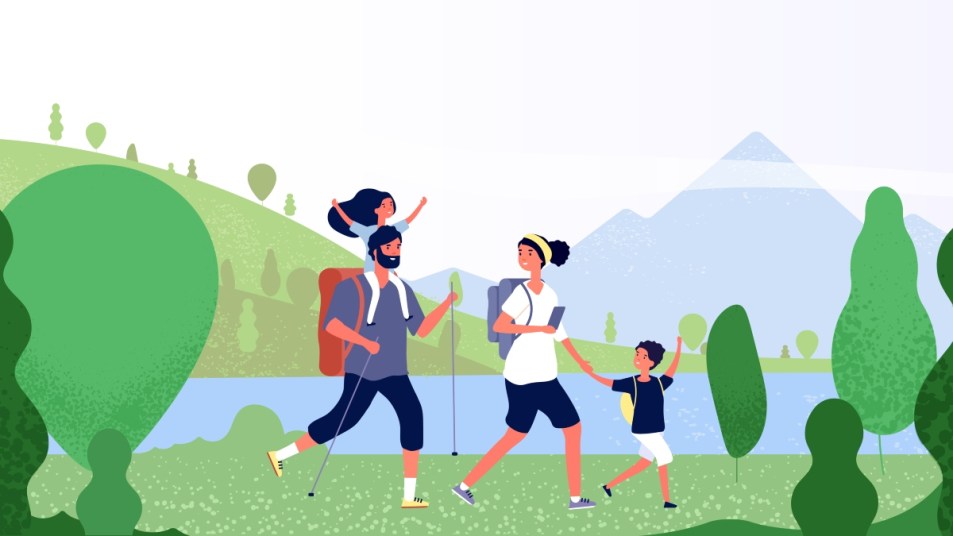Boost Your Memory and Focus in One Afternoon: Try The Navigation Challenge on Your Next Walk
A mental exercise, prescribed by Chris Hemsworth, that's worth your time.

Forgetfulness is a normal part of aging. Misplacing your keys or struggling to remember a person’s name (it’s always right on the tip of your tongue!) isn’t necessarily cause for concern — but over time, frequent misremembering and forgetfulness can get scary. Fortunately, there are concrete ways to combat memory loss and improve cognition — starting with a fun navigation challenge you can undertake on your next walk.
The challenge we’re referring to was set by movie star Chris Hemsworth (you’ve seen him in Thor and The Avengers) in the National Geographic documentary series, Limitless. Over the course of six episodes, Hemsworth strives to overcome the limits of his own body and mind, taking part in a series of challenges that hypothetically combat aging. (We say “hypothetically” for a reason; one of the tasks has Hemsworth swimming through 250 yards of icy water in the Norwegian Arctic, which is probably not advisable for most people. The episode begins with a doctor warning the 39-year-old that the task could cost him his life.)
Naturally, not all challenges set by Hemsworth are feasible. The navigation challenge, however, is one that has real-world benefits outside of Limitless — and it’s very doable for mere mortals. Learn more about the task, its health benefits, and how Hemsworth used it to improve his cognition below.
Why Brain Health Is So Important to Hemsworth
In episode five of Limitless, titled “Memory,” Hemsworth turns his attention from physical tasks to mental tasks. Physician Peter Attia, MD, orders a series of genetic tests for Hemsworth to better understand his cognitive health. In so doing, the pair make a shocking discovery: Hemsworth has two copies of the gene APOE4 — one from his mother, one from his father. This rare combination dramatically increases his risk of Alzheimer’s disease. (An estimated two to three percent of people have two copies of the gene.)
“The show, which initially was an exploration of longevity and, of course, should be fun, became even more relevant and important for me, even more poignant than I ever thought it would be,” Hemsworth told Vanity Fair. “It was a really good catalyst to dive into everything I needed to be doing in either the prevention front or the management front. It’s not a pre-deterministic gene, but it is a strong indication. Ten years ago, I think it was more thought of as determinant.”
How Hemsworth Tackled the Navigation Challenge
So where does the navigation challenge come in? According to neurologist and Limitless participant Sharon Sha, MD, MS, there is research linking technology dependence to poor brain health — although it’s a little complicated. In a recent interview, she noted that smartphones have their benefits; FaceTime, for instance, helps us stay connected to loved ones, and social interactions are very important for cognitive health. On the other hand, relying on your GPS every time you hop in the car limits your attention and multitasking abilities.
With this in mind, Dr. Sha sent Hemsworth and his friend, Otis Hope (a First Nations artist) on a two-day hike. Hemsworth and Hope had to navigate through Hope’s ancestral homeland in Australia, from one point to another, without the help of a GPS or map. (They viewed and memorized the map as best they could before setting off.)
As Hemsworth and Dr. Sha explain in the episode, navigation in the outdoors may be vital to the health of the hippocampus, or the brain’s memory center. “As we age, the hippocampus shrinks, and it’s one of the first areas targeted by diseases like Alzheimer’s,” Hemsworth narrates. “But when we stimulate it with activities like navigation, it becomes bigger and healthier as new connections are forged and more brain cells added.”
The Health Benefits of a Hike… Without GPS
There are several key benefits for the brain when you take a walk without help from electronics. A 2021 study published in NeuroImage showed that the brain’s white matter — which consists of fat-wrapped nerve fibers called axons — remodels and freshens itself when people are more physically active.
Another study, published in 2017 in the Journal of the Association for Consumer Research, made headlines because it found that a smartphone demands so much of a user’s attention that it reduces a person’s working memory and problem-solving skills. That may be true even when a person isn’t actively using it, because the phone’s mere presence is a distraction. Yet another study from 2017, published in Nature Communications, found that using a GPS to navigate significantly decreases brain activity in the hippocampus.
In effect, walking and driving without the help of a GPS is a great way to stimulate your hippocampus and keep it healthy. Better yet, taking a friend with you boosts interest in the activity, and the social interaction will help your brain forge and strengthen even more neural connections.
Try It Yourself
Ready to try the navigation challenge yourself? The next time you go on a walk, take a friend and leave your phone behind. Or, take your phone in case of emergencies, but challenge yourself to keep it tucked away. Check out a map of the area before you head out, and make a mental note of the route you plan to take. If you get a little lost, ask a passing stranger for directions. (Your phone is a last resort.) Enjoy the time outside, knowing you’re doing a wonderful thing for your cognitive health.












